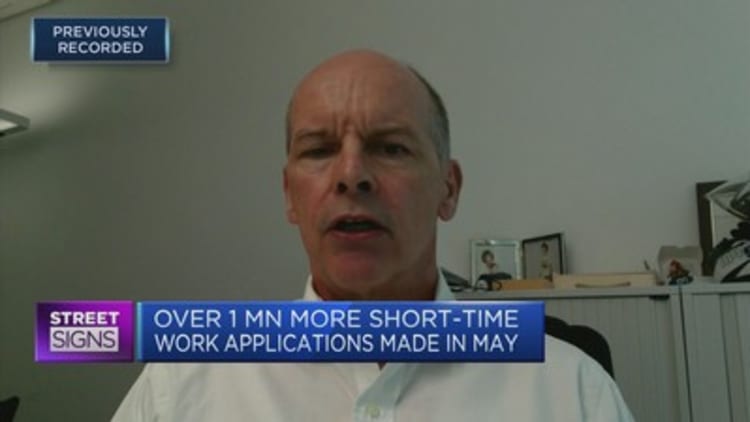Unemployment in the euro zone rose to 7.3% in April, according to the latest data from Eurostat, reflecting job losses as coronavirus lockdowns were in full-swing across the single currency region.
The jobless rate rose from 7.1% in March, revised lower from a previous figure, when European countries first implemented lockdown strategies to quell the outbreak that emerged in Italy in late February. For the wider European Union, the unemployment rate hit 6.6% in April 2020, up from 6.4% in March 2020.
Capital Economics' Chief Europe Economist Andrew Kenningham said the data was not as bad as expected (a rate of 8% or above was widely forecast) but that it was likely to rise further in the coming months.
"Looking ahead, the unemployment rate is likely to rise in the coming months as job-subsidy schemes expire, bankruptcies pick up and people return to the labour market. But we are now hopeful that our forecast for the unemployment rate to be around 12% at the end of the year will prove too pessimistic," he said in a note Wednesday.
The data showed that young people are bearing the brunt of job losses in the euro area, with the unemployment rate for under-25s rising to 15.8% in April, up from 15.1% the previous month. In the EU too, youth unemployment rose to 15.4% in April, up from 14.6%.
Youth unemployment is acute in some euro zone countries. In Spain, youth unemployment hit 33.2% in April while in Italy, it stood at 20.3% and in France, at 21.8%. Figures for Greece were not available for March or April but are likely to be worse, given that the rate stood at 35.6% in February. Even in Sweden, which did not impose a strict lockdown, the youth unemployment rate hit 24.4% in April.

Kenningham told CNBC Wednesday that young people were less able to benefit from some European schemes designed to help limit job losses during the epidemic, because more of them have relied on casual, zero-hours, temporary or part-time work.
Calling the levels of unemployment in Spain, France and Italy "truly shocking," he warned that "apart from the immediate costs and hardship involved, this risks stoking discontent with the status quo and boosting support for populist and euro-sceptic political parties."
Data released by Germany earlier on Wednesday showed unemployment in Europe's largest economy rose to 6.1% in May, from 5.8% the previous month. Economies across the euro zone, and wider European Union, have been gradually lifting restrictions on businesses and movement. Italy is allowing inter-regional movement from Wednesday and travel to and from the country from other members of the Schengen Zone that allows for visa-free travel between most European countries.


